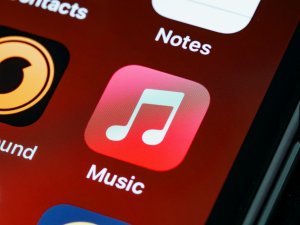Maximizing Your Apple Music Experience: Tips & Tricks for Subscribers

Apple Music stands as one of the leading music-streaming platforms, boasting a catalog of over 100 million songs. It serves as a strong alternative to competitors like Spotify and YouTube Music, both of which also offer extensive libraries. However, unlike Spotify, Apple Music does not provide a free, ad-supported tier. Instead, it ensures an ad-free listening experience with unlimited streaming, including access to Spatial Audio with Dolby Atmos and high-resolution lossless tracks.
Apple provides free trials of varying durations—some Apple device purchases come with a three-month trial. After the trial period, the standard subscription costs $10.99 per month. A family plan accommodating up to six users is priced at $15.99 per month, while students can subscribe for $5.99. Additionally, Apple Music is available as part of the Apple One bundle.
Apple Music is packed with features to enhance the user experience. Here are some useful tips and tricks to maximize your subscription:
1. Stream Apple Music on Various Devices
Most users access Apple Music through the iOS app on their iPhones, but it is also available on Mac, Apple TV, Vision Pro, Android, Windows, and web browsers. This cross-platform support allows seamless access to your music library, whether you’re using a work computer or switching to an Android phone. Keep in mind that certain features may vary across different versions of the app.
2. Explore Apple Music Classical
Apple Music subscribers also gain access to the Apple Music Classical app, designed specifically for classical music lovers. While classical tracks are available in the main Apple Music app, this dedicated platform offers better discovery tools and enhanced organization of different renditions. Any classical music saved in one app will also appear in the other.
3. Share Playlists With Others
Want to showcase your favorite tracks? Apple Music allows users to make playlists public or keep them private. To adjust sharing settings, navigate to the Home tab, tap the profile icon in the top-right corner, and select “View Profile” > “Edit.” From there, you can choose who can see your listening activity and which playlists are visible to others.
4. Collaborate on Playlists
Apple Music enables users to create collaborative playlists, allowing friends and family to add songs, rearrange tracks, and edit lists together. To enable collaboration, open a playlist and tap the icon with a person and a plus sign. You can either approve individual collaborators or allow access via a shared link.
5. Share Music With Nearby Users
Apple Music includes a feature for discovering nearby listeners, making it easy to share music in group settings like road trips or social gatherings. To activate this option, go to Settings > Apps > Music > Shared Listening and turn on “Discoverable by Nearby Contacts.”
6. Customize Your Library Organization
If the default library sorting options don’t suit your preferences, you can customize them. Tap “Edit” at the top of the Library tab to modify categories. iPad users can also rearrange the top menu bar by dragging items into or out of view.
7. Enable Infinite Autoplay
Apple Music keeps the music going with Infinite Autoplay, which continuously plays similar tracks after your playlist ends. This feature can be toggled on or off from the Now Playing screen under the queue section—just look for the infinity icon.
8. Enjoy High-Quality Audio With Dolby Atmos and Lossless
Apple Music provides high-quality audio streaming at no additional cost. By default, songs stream in 256kbps AAC, but users can switch to 24-bit/48 kHz ALAC or 24-bit/192 kHz ALAC for enhanced audio fidelity. Keep in mind that higher resolution formats consume more data—standard 256kbps streaming uses about 6MB per three-minute song, while Hi-Res Lossless can use around 145MB. To adjust audio quality settings, go to Settings > Apps > Music > Audio Quality and enable Lossless Audio.
9. Monitor Data Usage While Streaming
To keep track of data consumption, head to the Audio Quality settings within the app. If you want to minimize data usage, select the “High Efficiency” option, which significantly reduces streaming data consumption.
10. Filter Out Songs You Dislike
If a song isn’t to your liking, you can prevent it from appearing frequently in your playlists and Infinite Autoplay recommendations. Tap the three-dot menu next to the track and select “Suggest Less” to fine-tune your recommendations.
11. Discover Personalized Stations
Apple Music creates custom stations based on your listening history. Your personal station plays tracks from your library, while the Discovery Station introduces new music similar to your taste. Additionally, Apple Music offers mood-based stations tailored for love, focus, energy, and relaxation. These can be found under the Home tab in the “Stations For You” section.
12. Create Your Own Radio Station
Any song can serve as the foundation for a custom radio station. Tap the three-dot menu next to a track and select “Create Station” to generate a playlist based on similar music. Artist profiles also include a play button to launch a station featuring their songs, or you can use the menu in the top-right corner to start a new station.
With these tips, you can make the most of your Apple Music subscription, enhancing your listening experience across devices and personalizing your music library to suit your preferences.
Newer Articles
- The Evolution of Online Gambling: Ethereum Casino Live Dealer Games
- GSMA Confirms End-to-End Encryption for RCS Messaging
- AI and Cybersecurity: Expert Warns of Growing Threats from Automated Attacks

